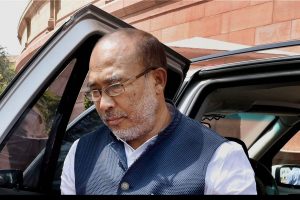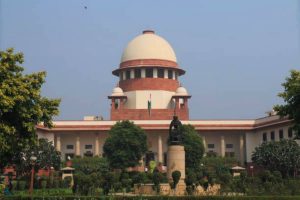The 16th Rasheswar Saikia Barbayan Sattriya Dance Award and the 56th Annual Festival of Dance were held recently in Guwahati by Sangeet Sattra in honour of its founder principal, Adhyapak Rasheswar Saikia himself, and were a rich fare.
Rasheswar Saikia has been a pioneer in teaching the girl child to learn Sattriya dance, which was an absolute taboo in the intimate space of Sattras.
Advertisement
The festival provided me with an opportunity to interview some practitioners, both veterans and the young, to examine its present state since it had been declared a classical dance form by Sangeet Natak Akademi 24 years ago.
I could see for myself that the form is taking big steps towards enriching itself from what it was when it had still not come out of the Sattra precincts. Years of nurturing will make it more sophisticated, polished, vibrant, rich, popular and sparkling.
Most importantly, it is a living art form with more than 750 different Sattras in Assam, and Sattras recognise Borbayans and Bargayans as the repository of devotion as a way of life through music and dance. In today’s world of strife and violence, the need of the day is to go back to one’s roots, where, other than Bhakti, or devotion and love, nothing else matters.
The most distressing trend in present times is that monks of Sattras opt out in search of better prospects, which prevents them from displaying their brilliance in proliferating devotion and art alongside the practitioners outside the Sattras.
Sattriya music too is unique. It has its own identity with its indigenous raga and tala patterns, which are followed by practitioners to represent the form in its truest essence. From a mere 9 tala system, presently it has 38. It has around 30 ragas. These are sung in Assamese or Brajawali language and are an integral part of Sattriya dance. Khol, taal, flute, violin, harmonium, etc., are some of the instruments used in sattriya music.
Since the dance form has emerged from Vaishnavism, Krishna themes are central to the form. Narratives of Bhakti literature and Bhaona stories inspired by the Bhagavata Purana and other Bhakti literature penned by Srimanta Sankaradeva and Madhavadeva, as well as texts like Bhakti Ratnakara, Anadi Patan, Bhakti Ratnavali, Ankiya Nats and the two epics, are taken.
Sattriya arts are socially relevant and effective because, for them, Bhaona, or Nam-Prasanga, or the Nritya-Prasanga are not just art per se; they are a social need. While understanding the tradition and embodying the dance form, one also needs to understand its social role and its enduring practice.
Ankiya Bhaona, written six centuries ago, was devised to propagate Shrimanta Sankardeva’s faith, which dwelt on one god concept in which people of every caste, creed and sex could participate in the community prayer sessions. It was of social relevance, and the themes adopted in choreographic works used such concepts.
All of the practitioners believe that innovations are within the enduring practice of the form. Practitioners have, at some time or another, worked on compositions that are philosophically ingrained with Bhakti tenets preached by Sankaradeva in his texts, which are of secular value. The stories of the Bhagavata found in the texts of Sankardeva and Madhavadeva are metaphors to signify human life and its existence within the paraphernalia of microcosmic and macrocosmic force. Works like ‘Paramaleela’ speak not only of an interactive play of Krishna with the surroundings but also elucidate the balance of the cosmos with the Divine force through suspension of our ego and embracing the essence of Truth with surrender.
For its proliferation, the tradition of Sattriya form has been included in academic spaces. Braving all hurdles, some have taken it as a profession, though it is a difficult journey, since opportunities as compared to other popular dance forms are—as of now—less in Sattriya.
The study and practice of Sattriya dance and music was an integral part of the rituals of Sattras only for the last 520 years, until it was recognised as a classical dance form in 2000 C.E., and that is when promotion and performance of Sattriya dance outside Sattras started.
Compared to the other dance forms, it is very new, which is why it is not so popular. However, gradually Sattriya dance is gaining national and international recognition through different performances, festivals, cultural exchange programmes, etc.
Fellowships, grants, and cultural exchange programs by Sangeet Natak Akademi—the apex body of dance and music—Zonal Cultural Centres, ICCR, some government agencies, and a few others have been of great help towards the growth and development of the form.
Popularity will come slowly but surely with the efforts of dance aficionados, well-wishers, and concerted efforts of institutions like Sangeet Sattra and dance ambassadors who constantly tour all around the globe. Schools that have introduced courses on dance forms in general and Sattriya in particular will make all the difference. Showcasing the dance form to tourists travelling to Assam would also be an innovative idea that will endear Sattriya Dance to people who visit the beautiful state of Assam.
I acknowledge the valuable inputs of Sattriya practitioners. Sharodi Saikia—Sangeet Natak Akademi Awardee, scholar, writer, and exponent of Sattriya Dance; Sangeet Natak Akademi awardee Ranjumoni Saikia—principal, Sangeet Sattra; Dr Anwesa Mahanta—Sattriya dancer and scholar, recipient of Sangeet Natak Akademi Yuva Puraskar; and Sha Rani Baishya—Sattriya dancer, recipient of Bismillah Khan Yuva Puraskar.
The writer is a senior dance critic











